Hole in the Head Disease: Head & Lateral Line Erosion in Discus
Hole in the head disease or HITH in discus fish also known as head and lateral line erosion, or HLLE is a very common aquarium and tropical fish disease that can affect most cichlids such as symphysodon discus, oscars, and etc. While the discus hole in the head disease can be fatal, this is not always the case. If properly diagnosed and treated, especially those detected early, the head and lateral line erosion can be treated effectively by medication and proper diet.
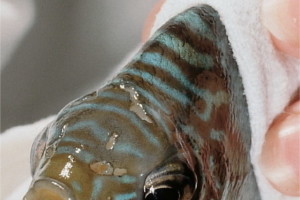
Hole in the Head Disease in Discus Fish
The reason of the head and lateral line erosion condition in discus fish is by a flagellated protozoan parasite named spironucleus. However, many people believe that hexamita can also cause the head and lateral line erosion disease in discus fish. Although the hole in the head disease is caused by protozoan flagellates and needs be cured immediately by medication, the main cause of this condition is nutritional deficiency. In fact, the lack of vitamins and minerals help disease development.
Hole in the Head Disease
Many people want to know how contagious the hole in the head disease is in discus fish and aquarium tanks? Even though head and lateral line erosion disease is not a 100% non-contagious/non-transmissible disease, it is not normally considered as a contagious sickness among discus fish and aquarium environments. This is because there is a direct link between lateral line erosion disease (HLLE) and nutrition deficiency in fish.
White Spots and Holes on the Head of a Discus Fish
HOLE IN THE HEAD SIGNS AND SYMPTOMS
- Small sores above the discus’ eyes and on the sides of the head.
- Small pits around the head of the discus and/or it’s lateral line.
- Small holes and lesions on the fish’s skin and around the lateral line which is the most common symptom of the hole in the head disease.
- Stringy mucus on skin erosion and wounds.
- Secondary infections and eventually death in discus fish.
POSSIBLE CAUSES OF HEAD AND LATERAL LINE EROSION
- Long-term use of activated carbon in discus’ tank.
- Frequently feeding beef heart and frozen bloodworms.
- Vitamin deficiency and bad/poor diet.
- Minerals and calcium deficiency.
- Spironucleus flagellates.
- Hexamita.
- High stress levels in discus fish. Stress can affect immune system of the discus.
As stated before, fortunately the hole in the head disease is not hard to treat at all. However, a quick and proper diagnosis is required to treat head and lateral line erosion disease effectively. In the next paragraph, you will learn about the treatment options available for HITH. If you have any discus fish or other cichlid with holes, pits, and lesions around their head and face, just do not get scared and follow the instructions below to treat your discus hole in the head problem.
Hole in the Head Treatment
As mentioned before, The hole in the head is not a hard disease to treat especially in discus fish. This can be easier for fish which are at the very first stages of the disease. All you need to do is to quarantine the sick discus and following these steps.
MEDICATION
The main priority is to control and eliminate the Pathogen that causes the hole in the head disease in your discus which is Spironucleus flagellate (Some believe Hexamita is the Pathogen). To do so, you should use medications that are effective in controlling protozoan parasites. Make sure to follow the directions and instructions from whatever medication that you use. Healing period must be completed fully, so don’t stop treatment once you no longer see the symptoms of the disease in discus, or even when the white holes are no longer visible on discus head. Here is a list of the best well-known and effective medications to treat hole in the head disease (head and lateral line erosion) in the aquarium fish.
- The most common medicine used to treat hole in the head disease not only in discus but all other ornamental tropical fish is Metronidazole.
- API General Cure™ Powder.
- Hikari Metro plus are another effective cures to treat HITH in discus.
HEALTHY FOODS AND DIET RICH IN VITAMINS AND MINERALS
Even though it is not proven yet that there is a link between hole in the head disease development and activated carbon, there are some researches that show that it may increase the chance of development of the head and lateral line erosion disease in all tropical fish including discus by removing essential minerals from the water. So remove all activated carbons from the filtration system. Do not use pure R/O or distilled water. There are some necessary minerals and trace elements that are important to discus. As previously mentioned, one of the main reasons for this disease is lack of minerals in the water. Mixing distilled or reverse osmosis (R/O) water with tap water to add essential trace elements and minerals back into the purified water is not a bad idea. However, there are some aquarium commercial products to add minerals back into the aquarium water such as Sera Mineral Salt, Kent R/O Right Water, Seachem Replenish, and etc. Change your fish diet and bear in mind that too much beefheart with no additive can lead your discus to nutritional deficiency which make the fish prone to hole in the head disease. Discus must have a balanced diet including pellet foods, flake foods, vitamins, frozen foods, shrimp, and etc.


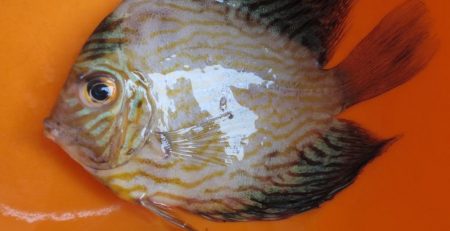
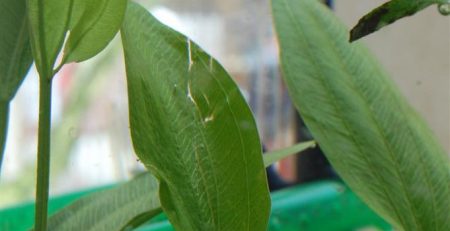
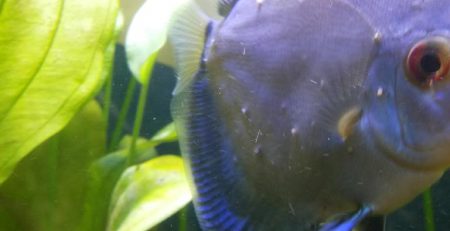
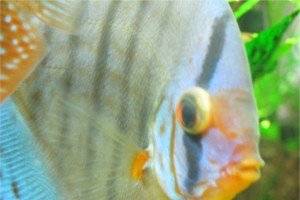
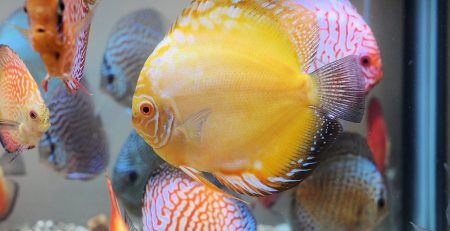

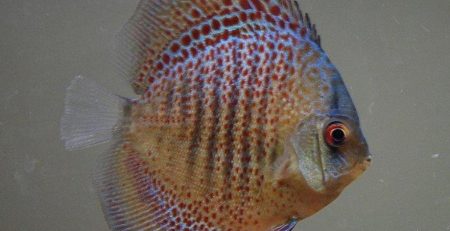
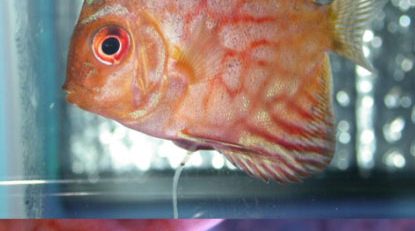
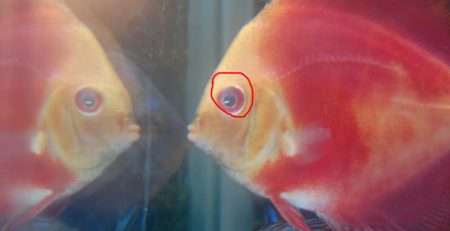
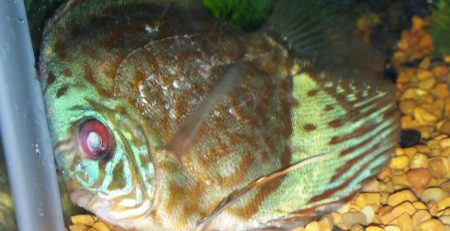
Leave a Reply
You must be logged in to post a comment.